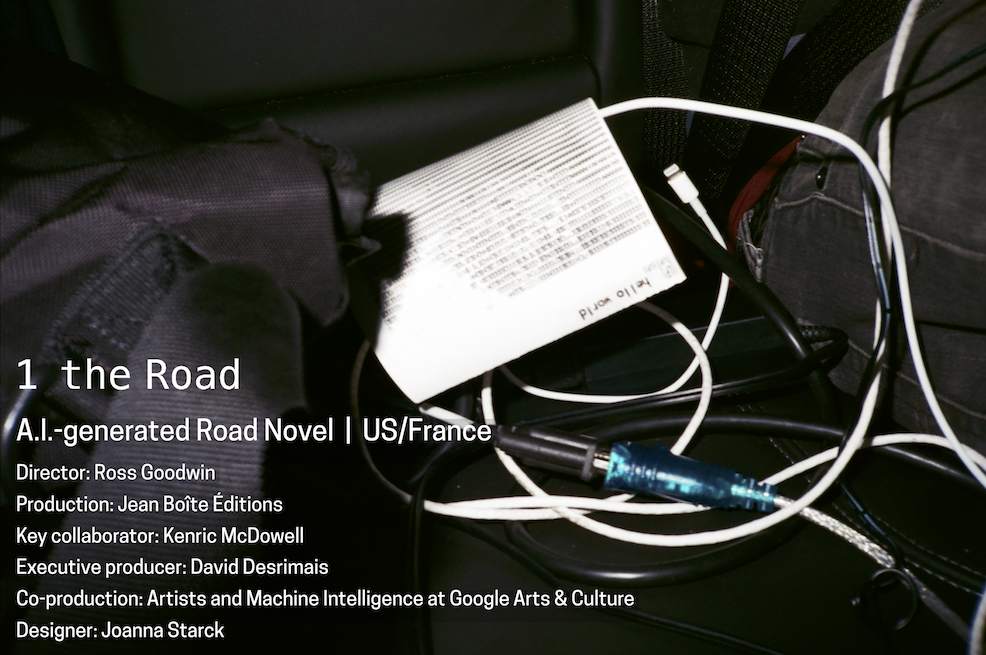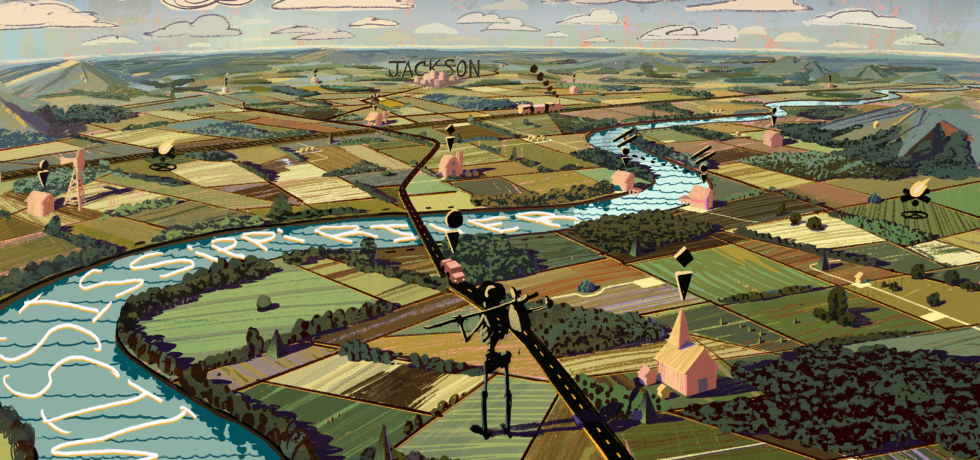1 the Road
Fueled by exploding gasoline, artificial neurons firing raw data through burning cores, not so much written as scorched onto each roll of thermal paper — by phantom authors, a mechanized pen, drivers at the wheel, or perhaps the road itself — from NYC to NOLA: 1 the Road is a book written using a car as a pen.
— Ross Goodwin
THREE QUESTIONS FOR THE CREATOR
Why this? Why now?
Ross Goodwin: To push literature forward by imagining new interfaces and methods for writing. The invention of the camera in the 19th century had a profound impact on artistic image creation, and in many ways set painting free, at least according to the painter Paul Cézanne. I’ve written in my introductory essay to 1 the Road about how I believe generative artificial neural networks might be like cameras for writing. In that sense, I believe these machines may hold the potential to set writing free — to deconstruct and reimagine the pen, the typewriter, and the linear process of writing, and to allow us to write with new and more powerful (and perhaps nonlinear and/or more continuous) interfaces such as a camera (as in my word.camera experiments) or a car (as in 1 the Road).
With respect to the rapidly maturing field of artificial intelligence, I also wanted to shed light on the inherent aesthetics of text that is produced with a certain type of machine. I fully understand that writing machines like these could be used for more nefarious purposes, such as deception or propaganda. And I want people now to look at these patterns, and to learn how to recognize them. Because if you see anything that reminds you of 1 the Road in a magazine or book or on a website sometime in the near or distant future, it may not have been written by a human, and we should all be aware of that.
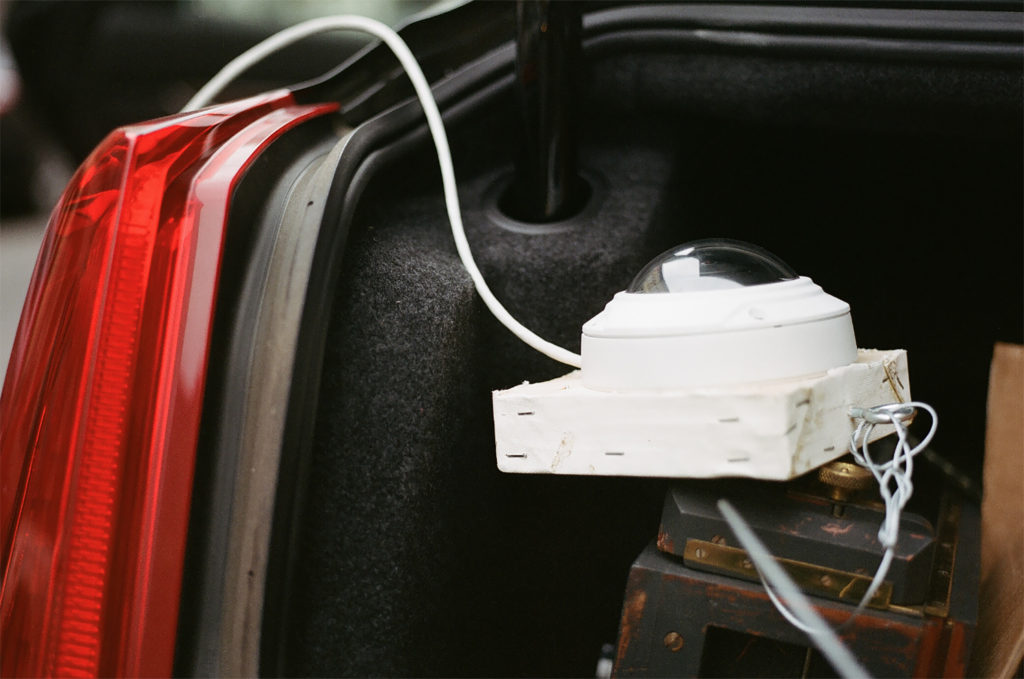
Was there something you were surprised to learn as you were making it?
RG: I learned that journeys can fuel narratives, even without human perception.
What was the most challenging aspect for you?
RG: I proposed the project about three months before the planned road trip dates and designed most of the system within that period of time. Putting together a deep learning system that could run continuously in a car was quite a challenge, as was nearly every aspect of this project. That said, it was not my goal to make the best possible novel written with a car, simply the first novel written with a car, so I used a rapid prototyping approach and made compromises where I felt they were necessary. If I do this experiment again, and I hope to do so, I plan to integrate all the lessons I learned from this experience.
File_001
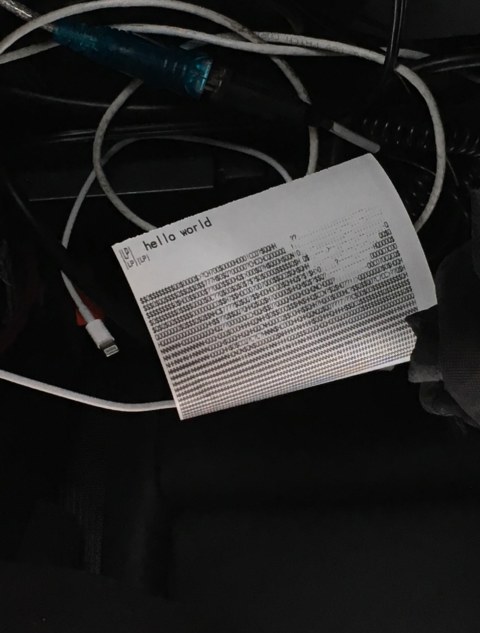
File_000
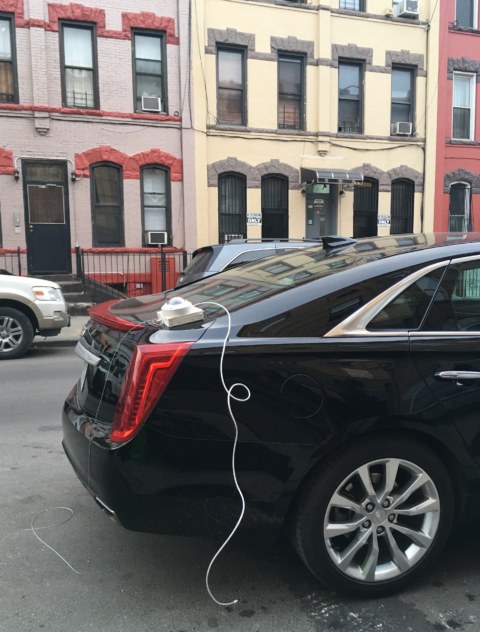
“The experience of reading ‘1 the Road’ is not unlike being on a road trip. If the car is the pen, then, in a funny way, reading ‘1 the Road’ is almost like riding shotgun.”




